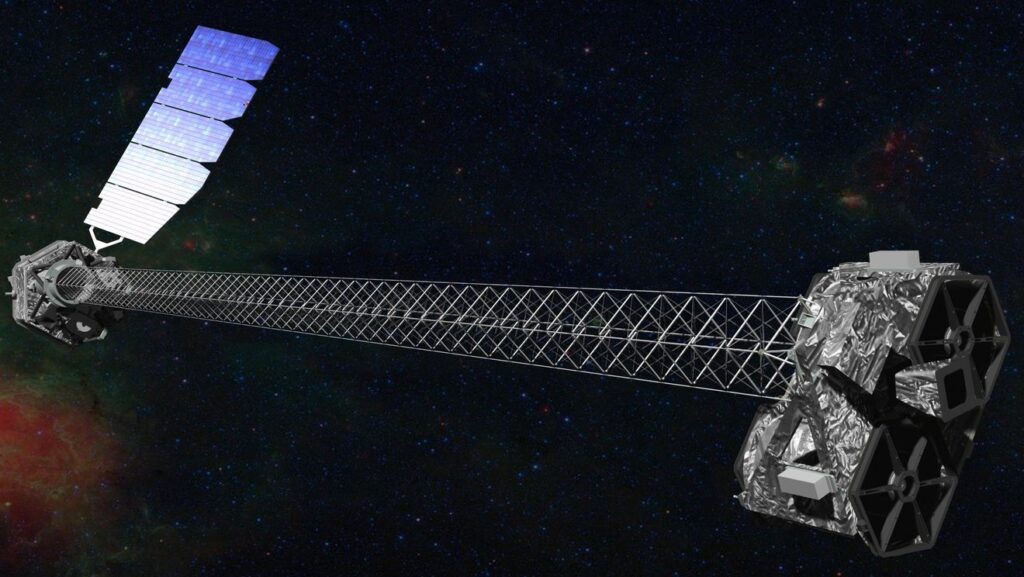This content has been archived. It may no longer be relevant

Credit: NASA/JPL-Caltech
A design quirk in the X-ray observatory has made it possible for astronomers to use previously unwanted light to study even more cosmic objects than before.
For almost 10 years, NASA’s NuSTAR (Nuclear Spectroscopic Telescope Array) X-ray space observatory has been studying some of the highest-energy objects in the universe, such as colliding dead stars and enormous black holes feasting on hot gas. During that time, scientists have had to deal with stray light leaking in through the sides of the observatory, which can interfere with observations much like external noise can drown out a phone call.
But now team members have figured out how to use that stray X-ray light to learn about objects in NuSTAR’s peripheral vision while also performing normal targeted observations. This development has the potential to multiply the insights that NuSTAR provides. A new science paper in the Astrophysical Journal describes the first use of NuSTAR’s stray light observations to learn about a cosmic object – in this case, a neutron star.
Nuggets of material left over after a star collapses, neutron stars are some of the densest objects in the universe, second only to black holes. Their powerful magnetic fields trap gas particles and funnel them toward the neutron star’s surface. As the particles are accelerated and energized, they release high-energy X-rays that NuSTAR can detect.
The new study describes a system called SMC X-1, which consists of a neutron star orbiting a living star in one of two small galaxies orbiting the Milky Way (Earth’s home galaxy). The brightness of SMC X-1’s X-ray output appears to vary wildly when viewed by telescopes, but decades of direct observations by NuSTAR and other telescopes have revealed a pattern to the fluctuations. Scientists have pinpointed several reasons why SMC X-1 changes in brightness when studied by X-ray telescopes. For example, the X-rays’ brightness dims as the neutron star dips behind the living star with each orbit. According to the paper, the stray light data was sensitive enough to pick up on some of those well-documented changes.
“I think this paper shows that this stray light approach is reliable, because we observed brightness fluctuations in the neutron star in SMC X-1 that we have already confirmed through direct observations,” said McKinley Brumback, an astrophysicist at Caltech in Pasadena, California, and lead author of the new study. “Going forward, it would be great if we could use the stray light data to look at objects when we don’t already know if they’re regularly changing in brightness and potentially use this approach to detect changes.”

